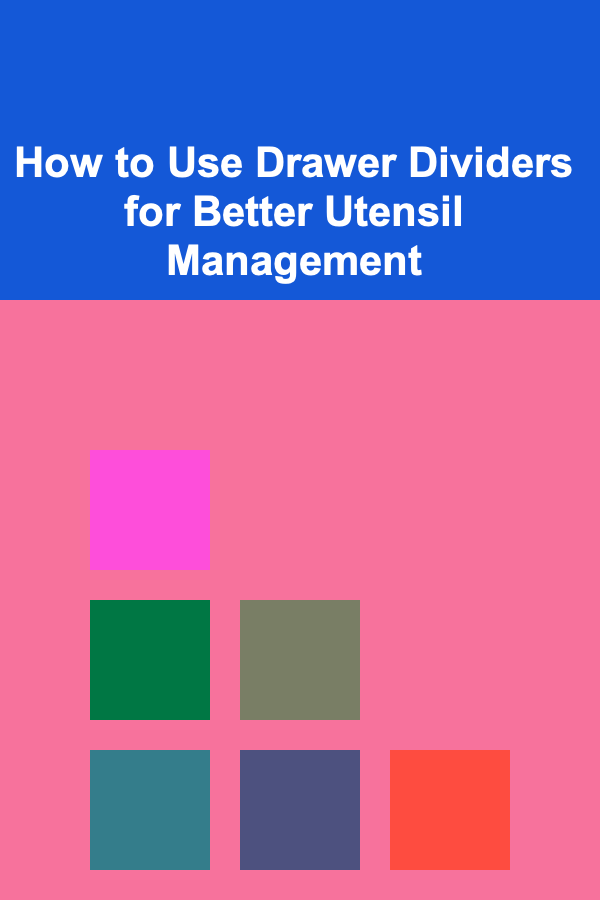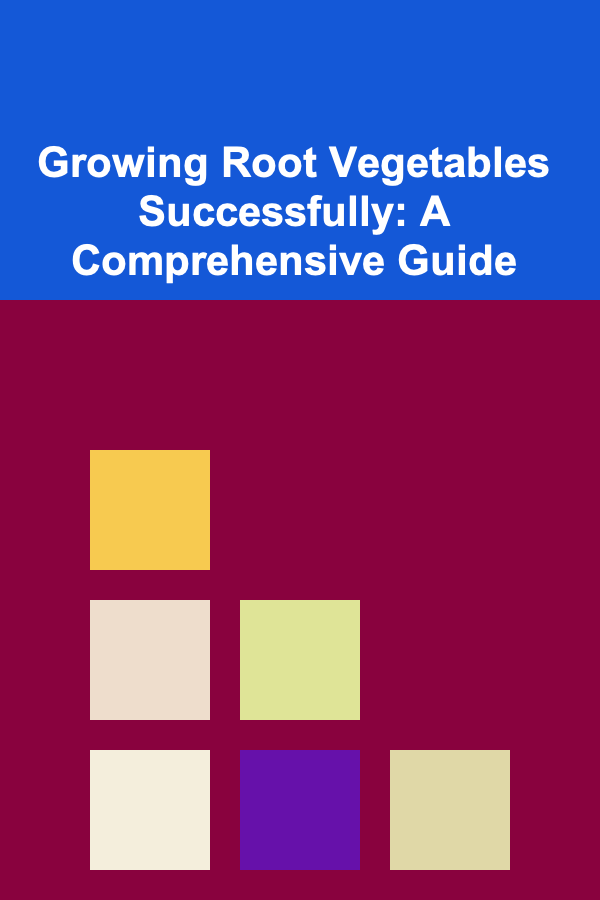
How to Design a Crafting Planner for Specific Projects
ebook include PDF & Audio bundle (Micro Guide)
$12.99$6.99
Limited Time Offer! Order within the next:

Crafting is a wonderful and creative hobby that allows individuals to express themselves, relax, and even produce meaningful gifts or decor for others. However, crafting can also become overwhelming when there are multiple ongoing projects, intricate patterns to follow, and various supplies to manage. A crafting planner can help simplify the process and keep all project details organized. In this article, we will explore how to design a crafting planner tailored to specific projects, ensuring that every detail is carefully considered, and your crafting journey becomes both more enjoyable and productive.
Understanding the Need for a Crafting Planner
Crafting, like any other project, requires careful planning. Without a proper plan, you can easily lose track of your supplies, miss deadlines, or feel overwhelmed by the number of unfinished tasks. A crafting planner serves as a tool to organize the workflow of a crafting project. Whether you're knitting, sewing, scrapbooking, or working with wood, a crafting planner helps you stay on top of the many different components involved in your project.
But how can a crafting planner be designed to suit specific projects, especially with the varying requirements that each craft might have? To answer that question, we will break down the process of designing a crafting planner into a few key sections.
1. Define the Purpose of Your Crafting Planner
Before you dive into the logistics of designing a crafting planner, it's important to first determine what you want to achieve with the planner. Are you crafting for personal relaxation, as a professional, or to make gifts for friends and family? Is there a specific deadline or event that you need to plan for, such as a wedding, holiday, or exhibition?
The answers to these questions will help define the structure of your planner. For example:
- Personal Crafting: If your crafting is for personal enjoyment, your planner might focus more on setting achievable goals, tracking inspiration, and documenting your creative journey.
- Professional Crafting: If you're crafting professionally, you might need a more robust planner that includes project timelines, client feedback, invoicing, and marketing plans.
- Event-Specific Crafting: If your crafting is for a special event (e.g., a wedding, party, or exhibition), your planner needs to include deadlines, themes, and coordination with other involved parties.
2. Identify Key Components of Your Crafting Project
Every crafting project will involve a unique set of components. A planner for knitting will look different from one designed for woodworking or paper crafting. To make your planner adaptable to various crafts, it is crucial to identify the key components that are involved in your specific project. Below are some common categories:
Project Details
For each project, you'll want a section that includes the following information:
- Project Name: A simple title or description of the craft (e.g., "Baby Blanket," "Scrapbook for Mom," or "Custom Dining Table").
- Project Type: Categorize the project (e.g., knitting, scrapbooking, jewelry making, woodworking, etc.).
- Start and End Dates: Knowing the duration of the project helps you manage your time effectively.
- Deadline: If the project is event-specific, mark important deadlines (e.g., the date the gift needs to be ready or the exhibition setup date).
- Goals and Objectives: Outline what you want to accomplish with the project. These could be both big goals (e.g., "complete the quilt") and smaller milestones (e.g., "finish sewing all patches").
Materials and Supplies
Managing supplies is a key aspect of any crafting project. Your planner should include:
- Supply List: A checklist of all materials and tools you'll need for the project, such as yarn, fabric, beads, or paints.
- Quantity Needed: Be specific about how much of each item you'll need (e.g., "4 skeins of blue yarn," "3 yards of cotton fabric").
- Estimated Cost: Knowing the budget is important to avoid over-purchasing or under-purchasing materials. Include prices and where to source the materials.
- Substitutions: Sometimes, your preferred materials might not be available, so include alternatives.
Techniques and Instructions
Understanding the techniques and steps involved in your crafting project is essential for smooth execution. This section should cover:
- Step-by-Step Instructions: Write or gather instructions for each part of your project. For example, knitting projects will require a pattern; woodworking might need a set of plans.
- Skills to Master: Identify any new techniques or skills you need to learn or refine (e.g., learning a new stitch for crochet or mastering a new tool for woodworking).
- Video or Online Resources: Include links to helpful online tutorials, videos, or instructional blogs.
Progress Tracking and Milestones
A crafting planner should help you track your progress so you can stay on target and evaluate your success along the way. You might want sections like:
- Task Checklist: Break the project down into smaller, manageable tasks. For instance, "Cut fabric pieces," "Assemble parts," "Sew patches," "Add finishing touches."
- Milestones: Set key progress checkpoints (e.g., "Finish the first row of knitting," "Complete all embroidery").
- Time Spent: Log how much time you spend on different tasks to help you improve your workflow for future projects.
3. Choose a Planner Format
Once you've decided on the key components, the next step is to choose the format of your crafting planner. There are many options to consider, depending on your preferences and how you work best:
Digital vs. Physical Planner
- Digital Planner: If you prefer to work digitally, you can use apps like Notion, Trello, or Google Sheets to design a digital crafting planner. These tools allow you to create templates, track supplies, set deadlines, and monitor progress, all in a dynamic, easy-to-access format.
- Physical Planner: Some crafters prefer a traditional paper planner. You can design and print your own pages with the necessary sections or use a pre-made planner with additional notes and customizable sections.
Customization
Regardless of whether you use a digital or physical planner, customization is key. Personalize the planner to suit your specific needs and preferences. For instance, if you're a frequent knitter, you might include sections dedicated to stitch patterns, knitting techniques, and gauge measurements.
4. Use a Structured Layout
The layout of your crafting planner is just as important as the content. A clean, structured design helps make the planner functional and user-friendly. Consider the following tips when creating your layout:
- Categorize Information: Use clear headings for each section (e.g., "Project Details," "Materials," "Progress").
- Incorporate Visuals: Use images, sketches, or diagrams where necessary. For example, a project might include a sketch of the pattern you're working on or a photo of a finished section.
- Space for Notes: Leave space for additional notes, brainstorming ideas, and reflections. This is particularly useful for creative projects where you might think of new ideas mid-process.
5. Plan for Flexibility and Adjustments
Crafting projects rarely go exactly as planned. Materials can run out, deadlines may change, or inspiration might strike midway through the project. Therefore, your planner should allow flexibility to accommodate these changes. Consider the following:
- Editable Sections: If using a digital planner, ensure that you can easily adjust the dates, materials list, or task progress.
- Rearrangeable Tasks: Don't lock yourself into a strict sequence of steps. Sometimes, tasks might need to be moved around as the project evolves.
6. Prioritize Sustainability and Efficiency
Crafting is often an iterative process, and as a crafter, you may develop habits that allow you to work more efficiently. Make sure your planner incorporates features that enable you to streamline your workflow. For example:
- Batching Tasks: If you're working on several similar projects (like creating multiple scarves), create a section that allows you to batch tasks like cutting, stitching, or painting.
- Sustainable Practices: Encourage sustainability by tracking the environmental impact of your materials and considering recycling or reusing supplies where possible.
7. Incorporating Personal Touches
A crafting planner should not just be a functional tool but also an inspiring one. Add personal touches to make it fun and motivating. Here are some ideas:
- Mood Boards: Include a page for collaging images, fabric swatches, or inspirational quotes.
- Creative Layouts: Design your planner in a way that appeals to you visually. Use colors, stickers, or patterns that match your crafting style.
- Reflective Sections: At the end of a project, leave room to reflect on what worked well and what you'd do differently next time. This will help you improve your planning for future projects.
Conclusion
A well-designed crafting planner is an essential tool for anyone looking to stay organized, manage their time effectively, and make the most of their crafting projects. By taking the time to design a planner that fits your specific needs and includes all the necessary components, you'll be able to approach each project with confidence, creativity, and clarity. Whether you're crafting for personal enjoyment, as a professional, or for a special event, a customized planner will ensure that you stay on track and achieve your crafting goals.
Happy crafting!
Reading More From Our Other Websites
- [Home Budget Decorating 101] How to Use DIY Wall Art to Decorate on a Budget
- [Gardening 101] From Seedlings to Harvest: Timing Your Fertilizer Applications for Maximum Yield
- [Organization Tip 101] How to Maximize the Performance of Your Cordless Drill
- [Home Budget 101] How to Save Money on Home Insurance: 5 Effective Strategies
- [Home Soundproofing 101] How to Use Soundproofing Clips and Hat Channels for Superior Noise Reduction
- [Personal Investment 101] Earn Money with Deep Learning by Developing AI Tools for Businesses
- [Personal Finance Management 101] How to Navigate Financial Planning After College: Essential Steps for Graduates
- [Home Party Planning 101] How to Plan a Party with Interactive Games for All Ages
- [Home Budget Decorating 101] How to Update Kitchen Cabinets Cheaply and Give Your Kitchen a Fresh Look
- [Personal Investment 101] How to Invest in Real Estate with a Small Budget

How to Evaluate and Choose the Right Investment Portfolio
Read More
How to Upgrade Your Home's Lighting Fixtures for a Modern Look
Read More
How to Use Drawer Dividers for Better Utensil Management
Read More
How to Write a Strong Resume Summary or Objective
Read More
How To Understand Quantum Computing for Materials Engineering
Read More
Growing Root Vegetables Successfully: A Comprehensive Guide
Read MoreOther Products

How to Evaluate and Choose the Right Investment Portfolio
Read More
How to Upgrade Your Home's Lighting Fixtures for a Modern Look
Read More
How to Use Drawer Dividers for Better Utensil Management
Read More
How to Write a Strong Resume Summary or Objective
Read More
How To Understand Quantum Computing for Materials Engineering
Read More